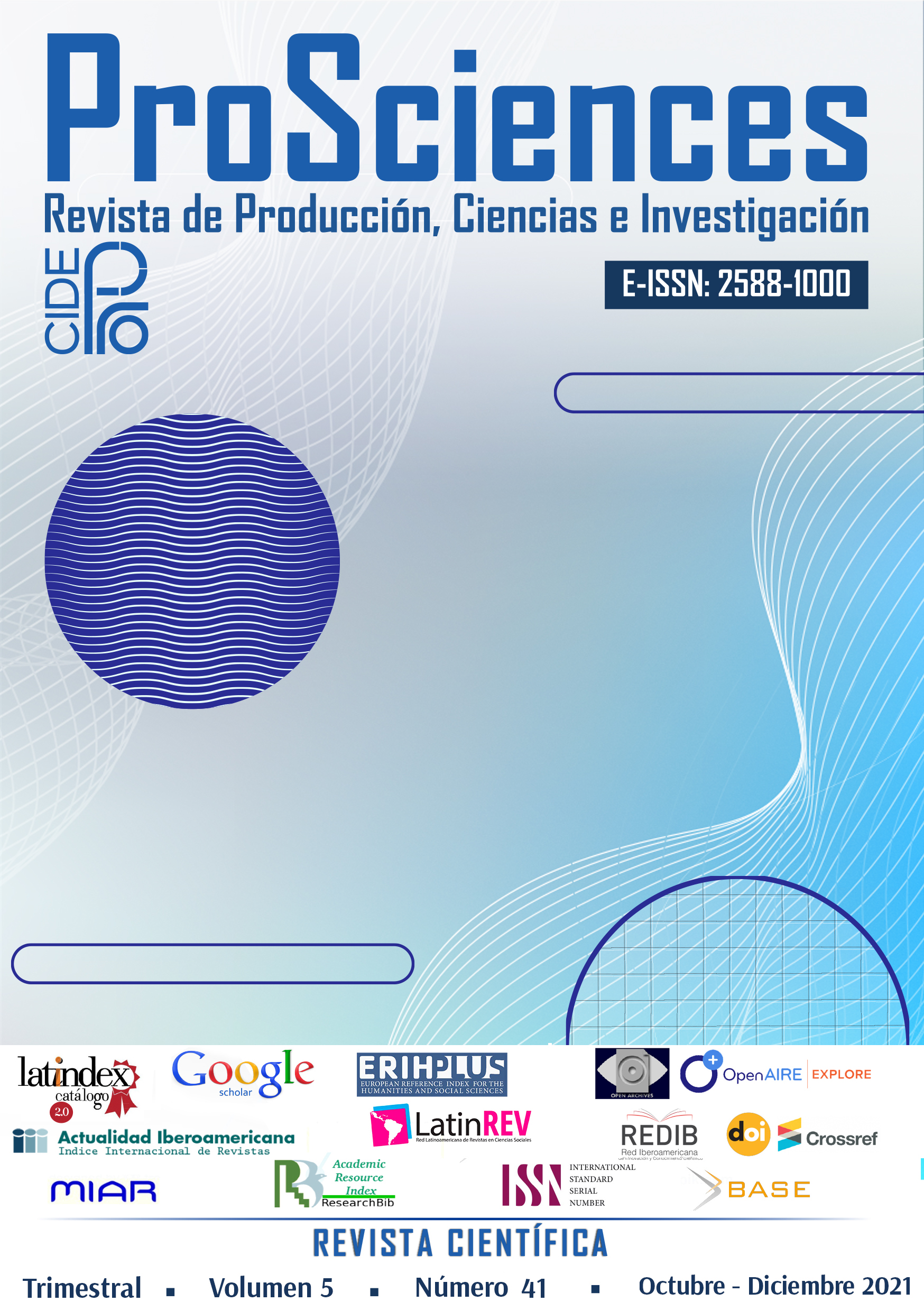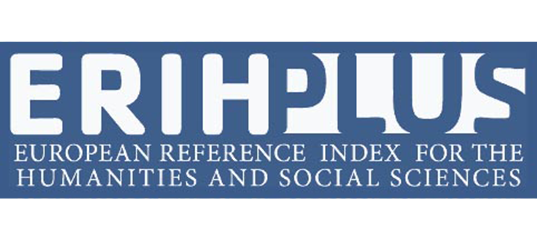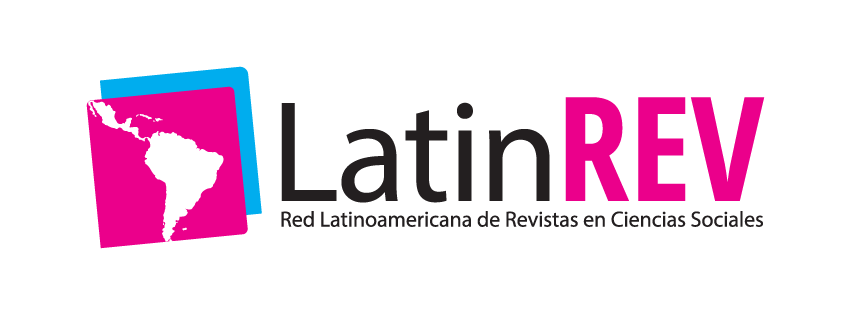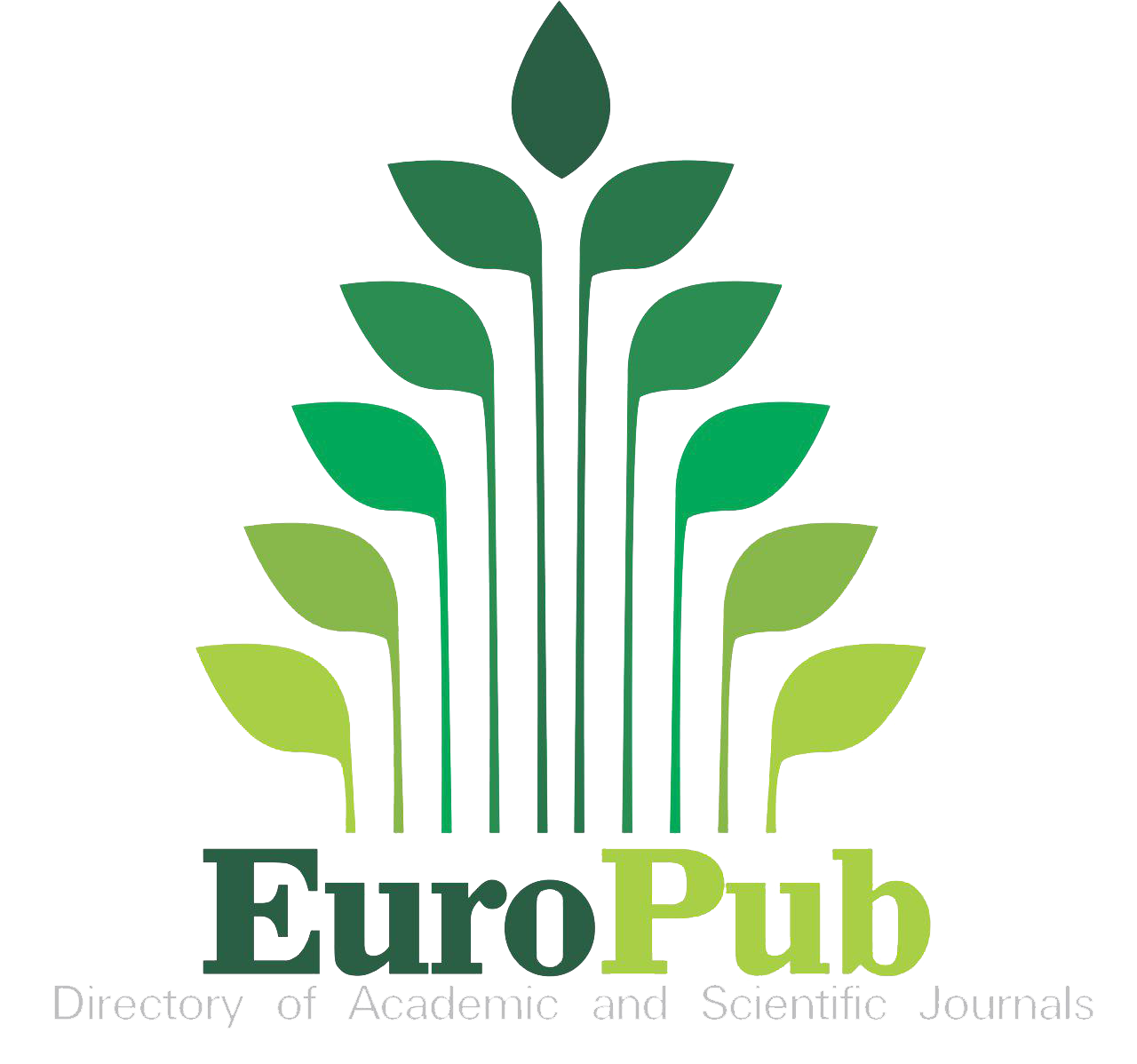Systematic review: neonatal bronchopulmonary dysplasia associated with prolonged mechanical ventilation
DOI:
https://doi.org/10.29018/issn.2588-1000vol5iss41.2021pp176-193Palabras clave:
bronchopulmonary dysplasia, mechanical ventilation, oxygen therapy, surfactant, caffeine, corticosteroidsResumen
Bronchopulmonary dysplasia has been characterized as a chronic lung disease producing oxygen dependence of variable degree, as a result of a predominance of pulmonary injury factors that have had a higher incidence in premature newborns who have required mechanical ventilation and supplemental oxygen added to this prenatal and postnatal factor. Objective: To review scientific literature on neonatal bronchopulmonary dysplasia associated with prolonged mechanical ventilation. Methodology: In order to obtain relevant information to contribute to knowledge, a systematic review of original articles will be carried out including the databases Pubmed, Scopus, Scielo, using the following keywords "bronchopulmonary dysplasia, mechanical ventilation, surfactant oxygen therapy, caffeine, corticosteroids". We searched for articles written in Spanish, English, and Portuguese, published in the last 10 years. Results: A search was carried out in the following databases: Pubmed, Scopus, Scielo, in which we obtained a total of 638 documents, of which 588 did not meet the inclusion and exclusion criteria, so that for the present research we used 25 articles that met the inclusion and exclusion criteria and were those that responded to the objectives set. Conclusions: Despite several studies carried out since the first description of this disease, to date it has not been possible to eliminate the prevalence of this disease in neonates subjected to mechanical ventilation since this is an important clinical social and economic problem. In turn, it was concluded that, when using noninvasive ventilation, early use of surfactant and rapid extubating, as well as implementing strategies that regulate ventilatory parameters to avoid volutrauma are protective measures against lung injury.
Descargas
Citas
Northway WH Jr., Rosan RC, Portero DY. Pulmonary disease after ventilator therapy of hyaline membrane disease. Bronchopulmonary dysplasia.1967 16;276(7):357-68. doi: 10.1056/NEJM196702162760701. PMID: 5334613.
Sola A, Fariña D, Mir R, Golombek S y Miembros del Consenso Clínico de la Sociedad Iberoamericana de Neonatología (SIBEN) Neo Reviews ,2018, 19 (11) e712-e734; DOI: https://doi.org/10.1542/neo.19-11-e712.
Brener Dik PH, Niño Gualdron YM, Galletti MF, et al. Bronchopulmonary dysplasia: incidence and risk factors. Arch Argent Pediatr 2017;115(5):476-482.
Naveda Romero O. Factors associated with bronchopulmonary dysplasia: a case-control study. Revista Pediatría EU. Publicado por Elsevier España;49(1):1; DOI:7http://dx.doi.org/10.1016/j.rcpe.2016.03.001 0120-4912.
Zavaleta Gutiérrez FR, Concepción Urteaga LA, Concepción Zavaleta MJ, Aguilar Villanueva DA. Risk factors and bronchopulmonary dysplasia in very low birth weight preterm infants. Revista Cubana de Pediatría. 2019;91(1).
Sancho Hernández R, Rojas Maruri M, Solorio Rodríguez L. The old organized bronchopulmonary dysplasia in the era of the new bronchopulmonary dysplasia. Acta Pediatr Mex. 2016;37(3):165-174.
Carvalho CG, Silveira RC, Procianoy RS. Lesión pulmonar inducida por la ventilación en recién nacidos prematuros. Rev Bras Ter Intensiva. 2013;25(4):319-26. doi: 10.5935/0103-507X.20130054.
de Oliveira Peixoto FA, Costa PS. J. Review of the use of corticosteroids in bronchopulmonary dysplasia. Pediatr (Río J). 2016;92(2):122-8. doi: 10.1016/j.jped.2015.07.007.
Giubergia V, Rentería F. Pneumological follow-up of infants with bronchopulmonary dysplasia at discharge from the neonatal intensive care unit part 2: oxygen administration, pharmacological treatment and follow up. Arch Argent Pediatr 2013;111(3):252-258.
Scavone C, Lorenzo D, Moreira I, Chiappella L, Criado A, Sast L. Saturometric and polysomnographic evaluation of preterm infants with and without bronchopulmonary dysplasia. Arch Pediatr Urug 2012; 83(3): 170-175.
Principi N, Di Pietro GM, Esposito S. Bronchopulmonary dysplasia: clinical aspects and preventive and therapeutic strategies. 2018 20;16(1):36. doi: 10.1186/s12967-018-1417-7.
Hwang JS, Rehan VK. Recent advances in bronchopulmonary dysplasia: Duck physiology, prevention, and treatment. lung. 2018;196(2):129-138. doi: 10.1007/s00408-018-0084-z.
Savani RC. Modulators of inflammation in bronchopulmonary dysplasia. Semin Perinatal. 2018;42(7):459-470. doi: 10.1053/j.semperi.2018.09.009.
Jobe AH. La nueva displasia broncopulmonar. Curr Opin Pediatr. 2011 ;23(2):167-72. doi: 10.1097/MOP.0b013e3283423e6b.
Pasha AB, Chen XQ, Zhou GP. Bronchopulmonary dysplasia: Pathogenesis and treatment. 2018;16(6):4315-4321. doi: 10.3892/etm.2018.6780.
Guimarães H, Rocha G, Vasconcellos G, Proença E, Carreira ML, Sossai MR, Morais B, Martins I, Rodrigues T, Severo M. Bronchopulmonary dysplasia: clinical practices in five Portuguese neonatal intensive care units. Rev. Port Pneumol. 2010;16(2):273-86. PMID: 20437004.
Taglauer E, Abman SH, Keller RL. Recent advances in prenatal predisposing factors for bronchopulmonary dysplasia. Semin Perinatol. 2018;42(7):413-424. doi: 10.1053/j.semperi.2018.09.002.
Nelin LD, Bhandari V. How to decrease bronchopulmonary dysplasia in your neonatal intensive care unit today and "tomorrow". F1000Res. 2017 21; 6:539. doi: 10.12688/f1000research.10832.1.
Bapat R, Nelin L, Pastor E, Ryshen G, Elgin A, Bartman T. A Multidisciplinary Quality Improvement Effort to Reduce Bronchopulmonary Dysplasia Incidence. J Perinatol. 2020;40(4):681-687. doi: 10.1038/s41372-019-0574-8.
Hilgendorff A, O'Reilly MA. Early changes of bronchopulmonary dysplasia leading to long-term consequences. Front Med (Lausanne). 2015; 2:2. doi: 10.3389/fmed.2015.00002.
Thébaud B, Goss KN, Laughon M, Whitsett JA, Abman SH, Steinhorn RH, Aschner JL, Davis PG, McGrath-Morrow SA, Soll RF, Jobe AH. Bronchopulmonary dysplasia. Nat Rev Dis Primers. 2019 14;5(1):78. doi: 10.1038/s41572-019-0127-7.
Aschner JL, Bancalari EH, McEvoy CT. Can we prevent bronchopulmonary dysplasia? J Pediatr. 2017; 189:26-30. doi: 10.1016/j.jpeds.2017.08.005.
Nascimento CP, Maia LP, Alves PT, Paula AT, Cunha Junior JP, Abdallah VOS, Ferreira DMLM, Goulart LR, Azevedo VMGO. Invasive mechanical ventilation and biomarkers as predictors of bronchopulmonary dysplasia in preterm infants. J Pediatr (Rio J). 2021;97(3):280-286. doi: 10.1016/j.jped.2020.03.006.
Surate Solaligue DE, Rodríguez-Castillo JA, Ahlbrecht K, Morty RE. Recent advances in our understanding of the mechanisms of late lung development and bronchopulmonary dysplasia. 2017 1;313(6): L1101-L1153. doi: 10.1152/ajplung.00343.2017.
Bhandari V. Postnatal inflammation in the pathogenesis of bronchopulmonary dysplasia. Defects congenital Res A Clin Mol Teratol. 2014 00(3):189-201. doi: 10.1002/bdra.23220.
Rayjada N, Barton L, Chan LS, Plasencia S, Biniwale M, Bui KC. Decreased incidence of bronchopulmonary dysplasia with erythropoietin administration in preterm neonates: a retrospective study. neonatology. 2012;102(4):287-92. doi: 10.1159/000341615.
Descargas
Publicado
Cómo citar
Número
Sección
Licencia
Derechos de autor 2021 Pro Sciences: Revista de Producción, Ciencias e Investigación

Esta obra está bajo una licencia internacional Creative Commons Atribución-NoComercial 4.0.



























